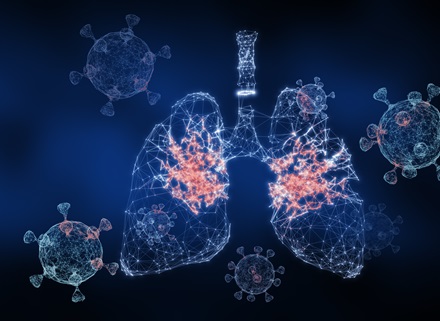AI Detects COVID-19 in Lung Ultrasound Images
Posted on 21 Mar 2024
During the onset of the pandemic, utilizing artificial intelligence (AI) to identify signs of COVID-19 in lung ultrasound images proved challenging due to limited patient data and a nascent understanding of the disease's manifestations. Though computational tools were applied to help detect COVID-19 from these images, the risk of misdiagnosis was high without adequately training and validating the AI to recognize features specific to COVID-19 in the lungs. Now, new research has led to the development of an AI tool that is capable of identifying COVID-19 in lung ultrasound images, similar to how facial recognition technology identifies faces in a crowd.
The AI tool developed by researchers at Johns Hopkins (Baltimore, MD, USA) is a deep neural network, a type of AI designed to mimic the interconnected neurons that enable the brain to recognize patterns, understand speech, and complete complex tasks. The AI tool employs algorithms to scan through lung ultrasound images for spotting features known as B-lines. These features are visible as bright, vertical abnormalities and are indicators of inflammation in patients with pulmonary complications. By learning from a combination of real and simulated data, it detects abnormalities in ultrasound scans that indicate a person has contracted COVID-19.

The findings of the research significantly enhance AI's role in medical diagnostics, helping healthcare professionals to promptly diagnose COVID-19 and other lung diseases. In addition to providing clinicians with the tool to rapidly assess the overwhelming number of patients in emergency rooms during a pandemic, the tool also paves the way for the development of wearables to monitor illnesses such as congestive heart failure, which can result in fluid overload in patients’ lungs, similar to COVID-19.
“We developed this automated detection tool to help doctors in emergency settings with high caseloads of patients who need to be diagnosed quickly and accurately, such as in the earlier stages of the pandemic,” said Muyinatu Bell, the John C. Malone Associate Professor of Electrical and Computer Engineering, Biomedical Engineering, and Computer Science at Johns Hopkins University. “Potentially, we want to have wireless devices that patients can use at home to monitor progression of COVID-19, too.”
“Early in the pandemic, we didn’t have enough ultrasound images of COVID-19 patients to develop and test our algorithms, and as a result our deep neural networks never reached peak performance,” said Lingyi Zhao, who developed the software while a postdoctoral fellow in Bell’s lab. “Now, we are proving that with computer-generated datasets we still can achieve a high degree of accuracy in evaluating and detecting these COVID-19 features.”
Related Links:
Johns Hopkins














